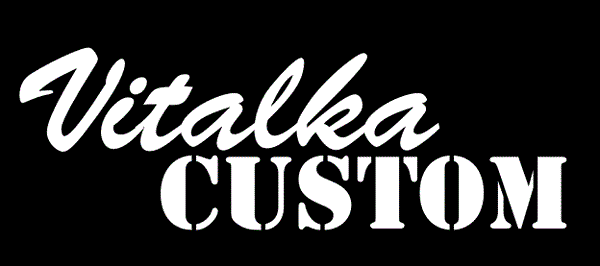Farfisa Synthorchestra MIDI kit retrofit Vitalka Custom.
EXPEREMENTAL MANUAL
This retrofit required a few schematic changes on synth and needed 97 Ohm external resistor. (maybe 100 Ohm will also good). But possibly it may be ignored. need to try difference.
Installation:
Select the right place to mount the LED, PCB, DIN5 MIDI connector and button on your synth (on the back panel near jacks for example or on top).
Drill holes only when all working correct. Because it experimental kit.
Mount connector and button before soldering wires.
Drill dimensions:
DIN5 18mm
LED = 4.8-5mm.(better if less 5mm to strong holding in the hole)
Push button = 12.5-13mm
Board dimensions and distance between screws:
Board dimensions 105x90mm
Holes distance 94x80mm
Holes diameter 3.5mm
Do not allow the board to bend, it can break the board. Connect IDC connectors and mount the board, or hold board when inserting connectors.
All ribbon cables are 1M long, enough for placing all connections and you can cut extra length.
Panic button is not included in the kit. In case of panic - enough turn off and turn on the synth.
The next picture shows the pinout for 8 wire ribbon cable and pin number of wires:
1 - DIN5 pin 4
2 - DIN5 pin 5
3 - LEARN
4 - GROUND
5 - LED ANODE
6 - RESET (skip)
7 - V+
8 - GROUND

(7) V+ and (8) GND should be soldered on the next points:

After soldering 8pin connector wires, time to soldering wires for key contacts.
About changes to farfisa:
- Disconnect wire from Farfisa monosynth common bus and add external resistor 97 Ohm (this value is calculated) Try 100 Ohm. Between bus and wire which marked on schematic as H. This resistor needed to compensation resistance optical switches.
- Then connect wire MONO_COM from MIDI board to H.
Digits near note Name says which octave number on Farfisa and are not equivalent for general MIDI note number name.
ZOOM
After installing MIDI, mono synth tune will be shifted down to approx. one-two semitone. Synth should be readjusted using this trimpot which shown on DWG4 of service manual.

Solder wires frim MIDI board to every key contact spring for monosynth part and polysynth starting from left side to right.
ZOOM
Board pinout on every octave and General MIDI note:
MONO Synth
POLY synth
This picture shown first (1) pin/wire on all connectors: Upper group connectors is for MONO key contacts, downer is for POLY key contacts of keyboard.

So, looks like installation finished. Now time to explain how set MIDI channel. This is what you need to know for starting use this retrofit.
To teach the MIDI channel, push the black button (LEARN) LED will blink two times and stay ON to wait for MIDI messages. When messages are received LED will blink five times and turn OFF and then will ON with every NOTE ON messages on the selected channel. Now the channel saved to memory and not changed before will be rewritten.
One small important thing - use hot glue for fix inserted connectors for protect from disconnection them during vibration when you ride on tour. Also, fix wires strong. Do not leave them holding only on soldering joints.
